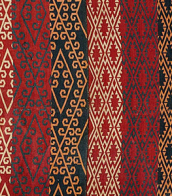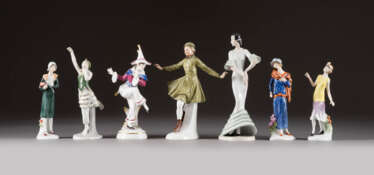steinbrenner

Hans Steinbrenner was a German sculptor.
Steinbrenner's work, whose first sculptures date from the end of the 1940s, was initially still influenced by his teachers. He created classically influenced individual and group figures. By the mid-1950s, Steinbrenner's style had changed and was influenced by his encounters with the sculptors Brâncuși (1876-1957) and Laurens (1895-1954) in Paris. He created abstract, biomorphic figures up to two metres high. In the 1960s he turned to geometric-abstract, rhythmically structured cuboid sculptures. In the last phase of his work (from around the end of the 1960s), Steinbrenner once again changed his stylistic expression to abstract, stele-like figures.


Hans Steinbrenner was a German sculptor.
Steinbrenner's work, whose first sculptures date from the end of the 1940s, was initially still influenced by his teachers. He created classically influenced individual and group figures. By the mid-1950s, Steinbrenner's style had changed and was influenced by his encounters with the sculptors Brâncuși (1876-1957) and Laurens (1895-1954) in Paris. He created abstract, biomorphic figures up to two metres high. In the 1960s he turned to geometric-abstract, rhythmically structured cuboid sculptures. In the last phase of his work (from around the end of the 1960s), Steinbrenner once again changed his stylistic expression to abstract, stele-like figures.


Hans Steinbrenner was a German sculptor.
Steinbrenner's work, whose first sculptures date from the end of the 1940s, was initially still influenced by his teachers. He created classically influenced individual and group figures. By the mid-1950s, Steinbrenner's style had changed and was influenced by his encounters with the sculptors Brâncuși (1876-1957) and Laurens (1895-1954) in Paris. He created abstract, biomorphic figures up to two metres high. In the 1960s he turned to geometric-abstract, rhythmically structured cuboid sculptures. In the last phase of his work (from around the end of the 1960s), Steinbrenner once again changed his stylistic expression to abstract, stele-like figures.


Hans Steinbrenner was a German sculptor.
Steinbrenner's work, whose first sculptures date from the end of the 1940s, was initially still influenced by his teachers. He created classically influenced individual and group figures. By the mid-1950s, Steinbrenner's style had changed and was influenced by his encounters with the sculptors Brâncuși (1876-1957) and Laurens (1895-1954) in Paris. He created abstract, biomorphic figures up to two metres high. In the 1960s he turned to geometric-abstract, rhythmically structured cuboid sculptures. In the last phase of his work (from around the end of the 1960s), Steinbrenner once again changed his stylistic expression to abstract, stele-like figures.


Hans Steinbrenner was a German sculptor.
Steinbrenner's work, whose first sculptures date from the end of the 1940s, was initially still influenced by his teachers. He created classically influenced individual and group figures. By the mid-1950s, Steinbrenner's style had changed and was influenced by his encounters with the sculptors Brâncuși (1876-1957) and Laurens (1895-1954) in Paris. He created abstract, biomorphic figures up to two metres high. In the 1960s he turned to geometric-abstract, rhythmically structured cuboid sculptures. In the last phase of his work (from around the end of the 1960s), Steinbrenner once again changed his stylistic expression to abstract, stele-like figures.


Rosemarie Trockel is a German conceptual artist. She has made drawings, paintings, sculptures, videos and installations, and has worked in mixed media. From 1985, she made pictures using knitting-machines.













































